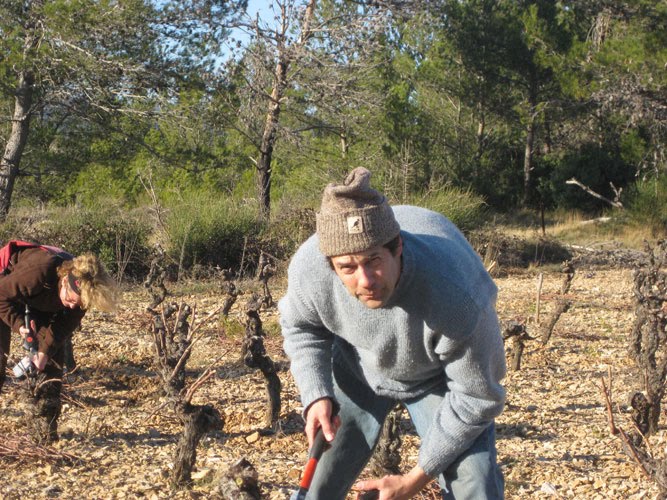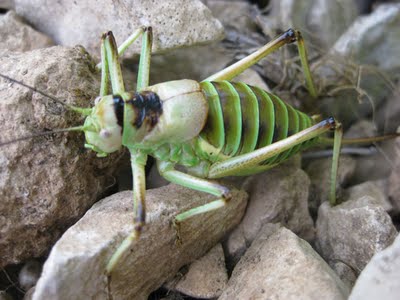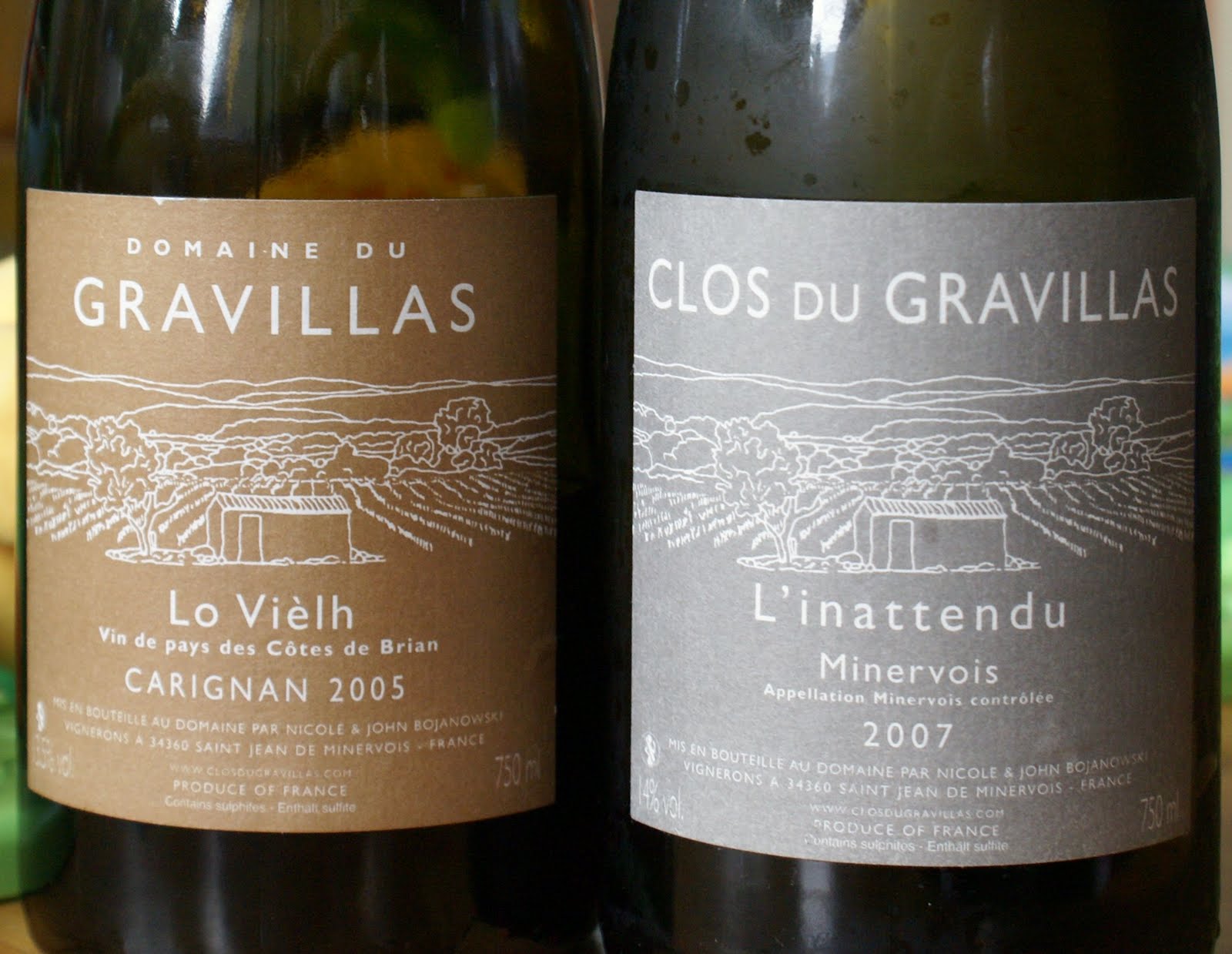Two big wines from Clos du Gravillas
To Minervois or not to Minervois?
It’ll be a tough job. No other grape has been denigrated so much in the last few decades. In France, authorities to their utmost to get rid of Carignan wherever they can. You can cash in thousands of €€ just by uprooting Carignan vineyards, no matter how good the wine they produce. In the variety’s traditional stronghold, the Languedoc, every single AOC appellation has a maximum limit of this grape in the blend (usually 40%; 50% in Corbières; the backwater AOC of
Fitou is an honourable exception in requiring a minimum of 30% Carignan).Until recently, Carignan was charged with all possible crimes. It was deemed responsible for the major wine glut of the Languedoc – whereas the real culprit were the heroic yields to which this flexible grape was harnessed (300 hl/ha was, apparently, far from being the record). Carignan was alleged to be a ‘rustic’ grape, unsuitable for ‘modern’ viticulture (read: mechanical harvesting) and its wines unappealing to ‘contemporary’ tastes (read: too acidic). It was also judged a ‘clonal disaster’ (but why did you ask nurseries for high-yielding clones back in the 1970s?).
The slow change in Carignan appreciation we currently witness is partly the merit of growers like the Bojanowskis who show the potential of the grape with low yields and old vines (these can run up to a 120 years in places), and partly that of the wine zone of
Priorat in Catalonia. Here, schistous soils, high elevations and a semi-Mediterranean climate results in some stunningly rich wines that have been making the headlines for a decade now. While the early successes of Priorat were based on the Garnatxa (Grenache) grape, there’s an increasing interest in the local Carinyena (Carignan), which helps to balanced Garnatxa’s sexiness with some meaty spice and minerality; Carinyena-dominated wines such as Cims de Porrera, Clos Martinet and Vall-Llach are among the most exciting not only of Catalonia but of entire southern Europe. With such stunning wines being made with Carignan, it’s no wonder producers all around the huge crescent of Mediterranean land that was once ruled by Aragon (from Valencia to Sardinia) where Carignan was the dominating variety are starting to pay much more attention to its potential.If you look at it, Carignan is remarkably well-adapted to the various terroirs of southern France and north-eastern Spain. It ripens late so can be cultivated even in the hottest vineyards of Priorat and Collioure, yet buds late too so you can plant it fairly high without fearing for spring frosts (Priorat has plantings up to 900 m). While the new clones can yield generously resulting in pale diluted wines, with a bit of discipline and well-drained soils the grape is capable of great concentration (more so than Grenache, I think). It has a very deep colour (even more so than Syrah; in fact, it’s been used for years as a colouring ingredient in blends) that is very stable over time (unlike Cinsault, the ‘other’ traditional variety of the Languedoc that loses colours quickly). It’s also usefully high in acidity and very resistant to oxidation (unlike Grenache); it actually has a tendency towards reduction, producing (courtesy of brett, more often than note) the meaty, barnyardy bouquets that earned it the adjective of ‘rustic’.

Nicole and John Bojanowski pruning the old vineyards. © Clos du Gravillas.
Lo Vièlh is Clos du Gravillas’ top red (they also make a great job in the lighter bottlings); the top white is L’Inattendu. This wine, produced since 1999, was one of the first varietal versions (now there are far more) of Grenache Gris, one of several natural clones of the Grenache family: a pink-skinned version that’s traditionally been used to add fruit to oxidative sweet wines like Banyuls, or finesse to dry reds. It packs in a lot of punch and the 14% alcohol here can be considered a relatively light rendition.
If you’re thinking of Languedoc as a land of bland apéritif whites made from Clairette or, worse, Chardonnay, the L’Inattendu 2007 will come as a shock. It’s a very structured, brutally mineral wine that’s positively anti-aperitifey. Aromatically a bit challenging (ranging from fallen apple through onion to white pepper), it explodes on the palate with saline sappiness and rocky austerity. I think this sees new oak but there’s so much power to these grapes that they’ve eaten it all. It’s bone-dry, broad-shouldered but not exactly rich; a sort of sturdy, no-nonsense, caloric white wine that makes me think of lonely shepherds in the mountains having a cup of wine on a chilly August evening. If you’re not up in the mountains lonely, I’d serve this with food, although finding a good match will not be easy: the Bojanowskis suggest anchovies (notoriously difficult to pair with), I’d try salted cod or perhaps, simply, a slab of hearty pain de campagne with salted goat butter… It’s another wine I’d love to try at age 10 but with a few thousand bottles made each year, my chances are low.



